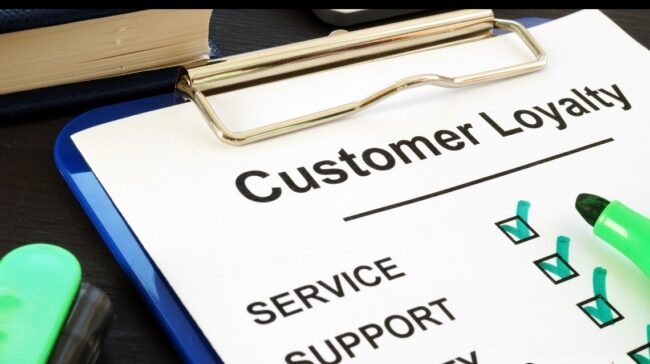Table of Contents
Customer experience doesn’t end at checkout. In fact, the moment someone hits “Place Order,” a new part of the relationship begins: the post-purchase stage. It’s the phase where expectations are highest and patience is shortest. People want reassurance, visibility, and care – and that’s exactly what a strong post-purchase platform should deliver.
Retailers used to treat post-purchase as an operational task: send tracking info, process returns, done. But now, it’s a core pillar of retention and brand equity. The right technology turns every delivery, delay, or update into an opportunity to build trust.
Let’s break down the five essential features modern e-commerce brands should prioritize when building or upgrading their post-purchase stack.
1. Unified Order Tracking Across All Carriers

Every brand wants fewer “Where is my order?” calls. The fastest way to get there is by giving customers a single, transparent view of their shipment journey – no matter which carrier handles it.
A unified order tracking system connects to multiple logistics partners and syncs updates in real time. It consolidates every scan, label, and timestamp into one branded portal instead of sending shoppers to third-party carrier pages.
With a modern post-purchase platform, retailers can present real-time shipping updates under their own brand, not a third-party carrier’s.
Why It Matters
- Customers check tracking links an average of 4–6 times per order. When your brand owns that interaction, you keep their attention longer and reinforce trust.
- Consistent updates reduce anxiety and frustration caused by confusing or delayed carrier data.
- Customer service teams get a full, real-time view of shipment status, reducing manual lookups and speeding up response times.
Example in Action
A mid-sized apparel retailer using a unified tracking layer noticed a 35% drop in support tickets within three months. Instead of opening multiple dashboards, agents could instantly confirm if an order was in transit, delayed, or delivered. Customers appreciated the faster answers and clearer communication.
2. Proactive Delivery Notifications and Smart Alerts

Reactive communication is outdated. Customers shouldn’t need to chase updates – they should receive them automatically and intelligently.
Modern post-purchase systems use event-based triggers to send proactive alerts at critical milestones: label created, out for delivery, delayed, or delivered. But the smartest systems go further by segmenting communication preferences and adapting tone or channel accordingly.
What Smart Notifications Look Like
- Real-time updates sent via preferred channels (SMS, email, app push).
- Delay alerts with clear next steps (“Carrier reports weather-related delay, expected delivery now Thursday”).
- Delivery confirmation with feedback or referral prompts.
- Localized language support for international buyers.
Business Impact
Proactive notifications aren’t just a convenience – they reduce service costs and improve satisfaction scores. A well-timed delay alert often prevents a support ticket entirely. For brands with thousands of daily shipments, that’s a measurable win in both labor hours and brand loyalty.
3. Centralized Returns and Exchanges Management

Returns are one of the biggest pain points in online retail. They eat into margins, clog inventory systems, and frustrate customers when the process feels slow or confusing. But when handled well, they actually strengthen brand perception.
A modern post-purchase platform should make returns feel as effortless as purchases. That means automated workflows, self-service options, and clear policy visibility before and after checkout.
Key Features to Look For
| Feature | Description | Benefit |
| Automated Label Generation | Instantly creates carrier-compliant return labels. | Saves time and reduces manual entry errors. |
| Smart Return Reasons | Lets customers select reasons that feed into analytics. | Reveals actionable product insights. |
| Exchange Suggestions | Offers size swaps or product replacements. | Retains more revenue compared to refunds. |
| Return Tracking | Provides updates as items make their way back. | Reduces “Has my return arrived?” messages. |
Example in Action
A DTC footwear brand integrated a self-service returns module that automatically generated QR codes for drop-off at local kiosks.
Return-related support tickets fell by half, and product feedback data revealed that one shoe style had consistent sizing complaints – insight that directly influenced the next production run.
4. Integrated Customer Communication Dashboard
Customer inquiries after checkout often come through scattered channels – email, chat, social media, even comments under ads. Without an integrated view, support agents lose time switching contexts and searching for order details.
Modern post-purchase software merges all post-order communication into a single dashboard. Agents can see full customer history, shipment data, and prior interactions in one place. The result is faster resolutions and more personalized responses.
Why Integration Is Critical
- Agents no longer need to cross-reference systems to find tracking numbers or past messages.
- Customers feel recognized rather than treated like a case number.
- Supervisors can analyze recurring issues by category (shipping delays, damaged items, sizing errors) and implement long-term fixes.
Example in Action
An electronics retailer implemented a unified communication layer that connected Zendesk, Shopify, and its logistics partners.
Customer inquiries that previously took 15 minutes to resolve dropped to under five, simply because agents had every detail on one screen.
5. Data-Driven Insights and Post-Purchase Analytics

Data transforms guesswork into strategy. The final pillar of a modern post-purchase stack is a strong analytics engine that tracks customer sentiment, order performance, and operational bottlenecks.
Analytics isn’t just about numbers – it’s about visibility. When you can see where customers lose confidence, where delays cluster, or which SKUs drive the most returns, you can act decisively instead of reactively.
Metrics That Matter
- First delivery success rate: how often orders arrive on the first attempt.
- Average resolution time: speed from inquiry to resolution.
- Return rate by SKU or category: identifies product quality or sizing issues.
- Tracking engagement: how often customers open status links.
- Customer satisfaction after resolution: immediate pulse on support quality.
From Data to Decisions
When analytics are baked into the platform rather than scattered across tools, leadership teams can see patterns in real time.
A spike in delays from one carrier? You can switch routes. High returns on one color variant? Adjust product imagery or descriptions. The goal is not just insight but continuous improvement across every customer touchpoint.
The Role of Integration in Strengthening Your Tech Stack
No post-purchase feature stands alone. To function properly, it must sync with your e-commerce platform, CRM, marketing automation, and warehouse management systems. Without that connection, even the most advanced tool becomes another data silo.
An ideal post-purchase platform integrates seamlessly with:
- E-commerce platforms like Shopify, Magento, or BigCommerce.
- CRMs such as HubSpot or Salesforce to enrich customer profiles.
- Support systems like Zendesk or Gorgias for unified service visibility.
- Marketing tools like Klaviyo or Mailchimp to trigger targeted re-engagement.
When integration is tight, your brand achieves something powerful: a holistic view of every customer’s experience, from checkout to doorstep and beyond.
Building Customer Loyalty Through Better Post-Purchase Design

A well-built post-purchase ecosystem isn’t just about logistics or automation – it’s about trust. Customers don’t always remember how smooth the checkout felt, but they remember if their delivery was late or their return was painful.
The post-purchase window is your moment to reassure, communicate, and show consistency. When technology handles the heavy lifting, your team can focus on what truly matters: relationships.
A Strong Post-Purchase Platform Should Deliver:
- Transparency: customers always know where their order stands.
- Speed: automation removes friction and manual steps.
- Empathy: communication feels personal and respectful.
- Insight: data loops inform smarter business choices.
The Core Features That Define Modern Post-Purchase Success
| Feature | Purpose | Core Benefit |
| Unified Tracking | Centralizes all carrier updates in one view. | Fewer support tickets and stronger brand control. |
| Proactive Notifications | Keeps customers informed automatically. | Boosts satisfaction and reduces anxiety. |
| Returns Management | Streamlines refunds and exchanges. | Retains revenue and gathers product insights. |
| Communication Dashboard | Centralizes all post-order conversations. | Improves agent productivity and personalization. |
| Analytics Engine | Tracks trends, bottlenecks, and feedback. | Enables continuous operational improvement. |
Summary
In the e-commerce world, the post-purchase experience has quietly become the most influential stage of the customer journey. It decides whether someone shops again or moves on. The technology you choose here directly impacts your bottom line, your brand reputation, and your ability to scale.
Building a smart, connected, and transparent post-purchase platform is no longer a luxury – it’s infrastructure. Each of the five features above plays a distinct role in strengthening your tech stack, but together they form the foundation of something larger: a business that delivers on every promise it makes.



